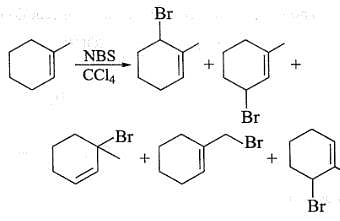Test: Reactions of Alkene - NEET MCQ
14 Questions MCQ Test Chemistry Class 11 - Test: Reactions of Alkene
Direction (Q. Nos. 1 - 7) This section contains 7 multiple choice questions. Each question has four choices (a), (b), (c) and (d), out of which ONLY ONE option is correct.
Q. What is true about the reaction given below?

| 1 Crore+ students have signed up on EduRev. Have you? Download the App |
Hydrogenation of alkenes can be carried out in the presence of
What is the major addition product in the reaction given below?
Direction (Q. Nos. 8 -11) This section contains 4 multiple choice questions. Each question has four choices (a), (b), (c) and (d), out of which ONE or MORE THAN ONE are correct.
Q. What is /are the expected product in the reaction ?
What are the expected product(s) in the following reaction?
In which of the following reaction, reactant(s) and product(s) are correctly matched?
Direction (Q. Nos. 12 and13) This section contains a paragraph, describing theory, experiments, data, etc. Two questions related to the paragraph have been given. Each question has only one correct answer among the four given options (a), (b), (c) and (d).
Passage
Caryophyllene (C15H24) contain a six membered ring and on ozonolysis gives following product.
Q. The structure of caryophyllene is
Caryophyllene (C15H24) contain a six membered ring and on ozonolysis gives following product.
Q. If caryophyllene is treated with 1.0 mole of HCI, a ring closure reaction takes place to form monochloride. What is the most likely product of this reaction?
Direction (Q . No. 14) Choices for the correct combination of elements from Column I and Column II are given as options (a), (b), (c) and (d), out of which one is correct.
Q. Match the alkenes from Column I with the stereochemistry of addition product(s) obtained with Br2/CCI4 in presence of FeBr3.
|
127 videos|232 docs|88 tests
|


















